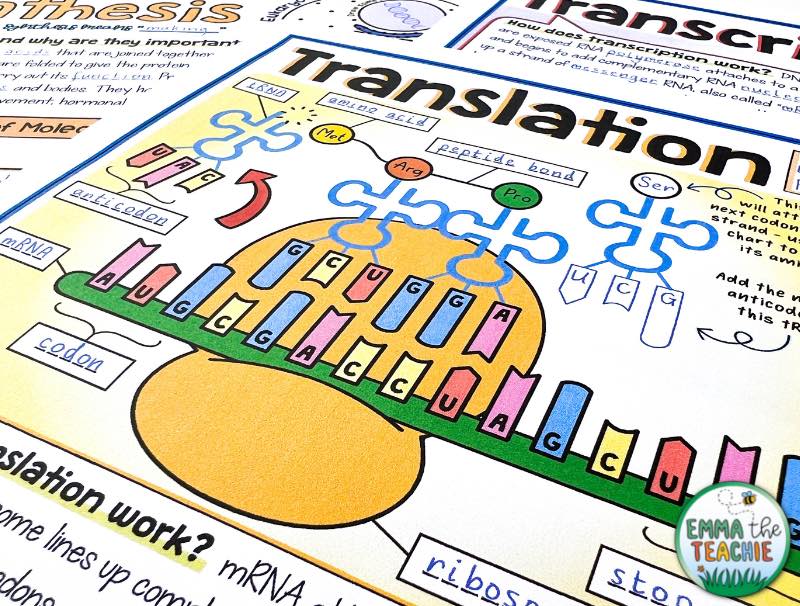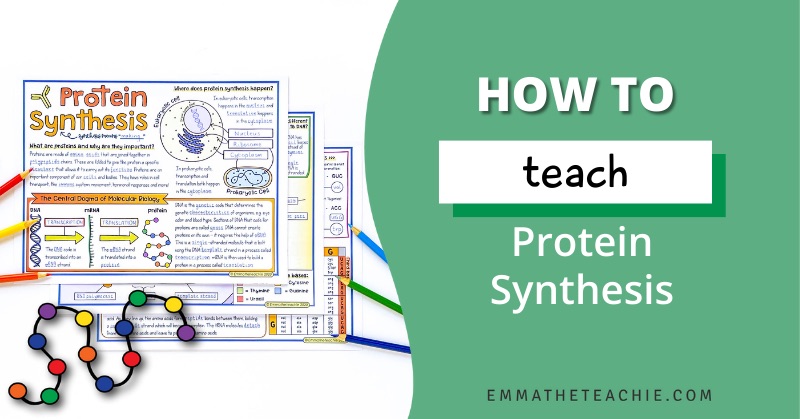
5 Ways to Get Students Excited About Biology
As a biology teacher, you teach and get to know most of the students in your school. However, this is primarily due to the fact that students are required to take biology. Biology is a required course.
As we all know, just because students are required to take a course doesn’t mean they are interested in the subject… yet!
Even though students may not be interested in biology when they start the class, this doesn’t mean they can’t be interested in it by the end of the course!
Today, I’m going to give you 5 ideas on how to make biology exciting for your students!

1 – Use labs in the classroom
This one is simple, especially since biology is a lab course (insert smiley face).
So, I guess I should say you need to be mindful of the labs you are choosing for your classes.
Pick and choose labs that will bring biology to life in the classroom!
Some exciting ideas that my students love include dissections, using microscopes to view cells, and going outside for various topics.
They love going outside! My advice is to take your students outside whenever you can. The joy and excitement on their faces cannot be beaten.
Some of the activities I like to do outside include sampling the environment and identifying species. I love watching my students’ faces light up when they realize that there is so much biology going on right in their backyard.

2 – Relate Biology to students’ lives
It is not a secret that students are more likely to enjoy and understand a topic when they can see its relevance. In other words, students will relate and engage more when they understand the “why” behind different biology concepts.
One way to relate biology to students is to emphasize how much biology is actually in the news on a daily basis. Students’ heads are usually buried in their social media applications, so they do not usually pay attention to the news.
You can create a biology news corner in your classroom. In this area, you can create a display where you can showcase different articles about biology in the real-world. Some of these articles could also act as a whole-group learning activity. You could project the article and ask students questions about the article, or they can ask you questions whenever there is time.
In addition, you should relate concepts back to students’ personal lives and own experiences. For instance, when you get to the endocrine system, you can ask students, “How do you feel when you are scared?” and ascertain the effects of adrenaline from their own personal experiences.
That’s the great thing about biology – every student has a personal experience with it!

3 – Encourage student curiousity
As students move through biology and get comfortable with the content and you, as the teacher, they will begin to show deeper interest in some topics.
I beg of you…
Do. Not. Stomp. On. This. Curiosity.
Celebrate the students’ curiosity!
If students show they are more interested in a certain topic, lean into it and embrace it. (*elbow nudge* It doesn’t happen super often, so enjoy it while you can!)
Yes, sometimes this will be, “Miss, how do snails reproduce?” But so what?! Pounce on that curiosity and take your lesson to a place it hasn’t been before. It’ll be an adventure for you, too! Plus, it is so worthwhile to delve deeper into student questions and take the time to connect with students and find the answers together.
P.S. in case you’re interested, this article explains how snails reproduce – it’s actually quite interesting!

4 – Use hands-on “craftivities”
Yes, you read that right – craftivities, a play on “craft activities”.
Craftivities are not just for elementary students. My students love them! Whenever I bring the crayons, markers, glue, and scissors out, there is an excitement that fills the room.
Craftivities allow students to work hands-on with topics in their own way. Students can construct their own ideas and make the learning their own.
One of mine and my students’ favorite craftivities is creating a cell membrane out of household materials. Students are given a variety of various objects, such as dried noodles, paint, beans, and yarn, to create a 3D model of a cell membrane. Students need to look at the characteristics of cell membranes and justify why they used the object they used.
It’s a hit every year!

5 – Use fun pictures and diagrams whenever possible
Reading pages and pages of text is boring.
I mean – would you read this blog post if it didn’t have any pictures?!
Biology is a super visual subject, and the more we can use pictures and diagrams, the more exciting and real we make it for students! These can be pictures in your slide shows, printed diagrams in activities, big classroom displays and more!
You can even use biology memes – believe me, there are a lot out there (and who doesn’t love a good meme?!)
For students who love drawing, you can encourage them to create their own diagrams – I am always surprised by the artistic talents some students have!
If your students are not able to draw great diagrams or don’t have an interest in drawing, you can provide engaging diagrams for them by using Doodle Notes!
Doodle Notes are great for bringing biological concepts to life. Students can color and complete the Doodle Notes based on how they learn best. If you want to learn more about how I use Doodle Notes in my classroom, check out that blog post here.
I have a variety of Doodle Notes sets in my shop. You should check them out!

Get your students excited about Biology!
I hope you enjoyed reading about 5 ways to get your students excited about biology!
We know how exciting a subject it is, and hopefully with these tips, your students will be just as enthusiastic!
Whenever you feel that your students need a boost, these strategies are certain to bring life back into your classroom.
I hope you have a wonderful day,




